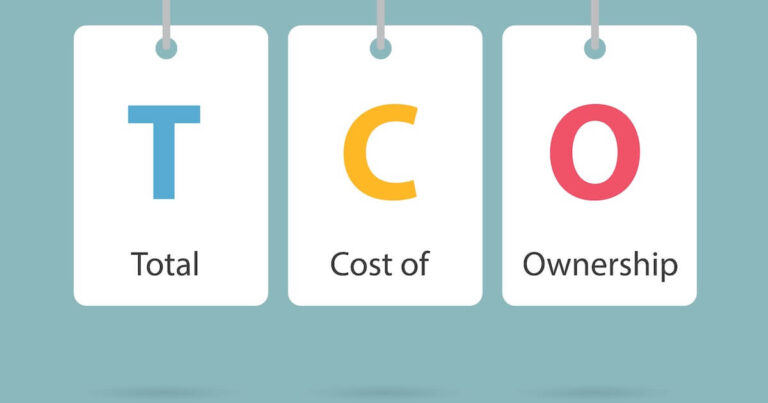Cloud backup strategy or a backup plan is crucial for every small and large-scale organization. As a part of a strategy, cloud backup refers to the process of sending a copy of a physical or virtual file or database to a secondary off-site location for preservation. The secondary storage systems are usually managed by a third party that provides backup, storage, and recovery solutions while ensuring the complete security of the data. This third-party service provider charges some fee to back up customers’ data based on storage occupied, data transmission bandwidth, usage of the number of servers, number of users, and number of times data is accessed.
Why Is Data Backup Important For Business?
Due to the increased frequency of breaches and outages, data backup strategy has become a dire need of every company. Additionally, the Covid-19 pandemic led to the usage of Bring Your Own Device (BYOD) and has fostered employees to work from home which makes it critical to protect remote data in different locations.
In such scenarios, backup solutions protect data from several risks such as human error, cyber attacks, hardware failures, data corruption, and natural disasters. Creating a backup plan guides an organization on how to protect data from any potential risk and do not act blindsided when something happens.
A proper data backup platform would enable the user to go back to the last known good point before the problem hit. In the best-case scenario, your backup should at least lead to a quick recovery of mission-critical data.
What Should Be Included In A Backup Plan?
The first thing to make sure of is that you have a backup strategy as many organizations don’t give much importance to it or have it. A strategy works like a data backup checklist that comes in handy to you and works as a starting point to perform recovery when required. Here is a step-by-step guide you can follow to plan backup:
- You must conduct a risk assessment and business impact analysis assuming multiple disruptions to the organization’s operations. The processes allow you to identify the issues that could potentially affect your organization’s ability to conduct business negatively. These assessments are key for disaster recovery plans as well; hence, you get valuable input for the backup plan in terms of what to backup and how often.
- The above process allows you to identify the scope of the backup such as the data the organization must backup and how frequently it should be backed up. In an organization, not every piece of data needs backup. On the other hand, mission-critical data requires continuous data backup and protection. Documenting this level of details of bits and bytes simplifies backup management for an organization and provides a reliable process for recovery.
- This way, your cloud backup strategy points out your organization’s process of performing data backup. For instance, it also talks about people who will be involved, programs and products which would be used, and the location of the backups. A backup strategy also details the procedure for testing, reviewing, and updating the process based on evolving business needs.
Implementing cloud data backup keeps files and data readily available in the event of a system failure, outage, or natural disaster. A business can back up some or all server files, depending on its preference.
How Does Cloud Backup Work?
There are multiple options available to integrate cloud backup. Different approaches to cloud backup include:
- Backing up directly to the public cloud: One way is to duplicate resources in the public cloud with the help of backup software. The method involves writing data directly to cloud service providers like AWS or Microsoft Azure. In this case, the cloud provider provides the destination to store enterprise data and ensure its safekeeping.
- Backing up to a service provider: In the second way of cloud backup, organizations can opt for backup services of a managed data center offered by cloud service providers. In this scenario, an organization writes data to the cloud. The service provider provides backup software to organizations to send their data to the cloud.
- Cloud-to-cloud (C2C) Backup: In the cloud backup arena, C2C backup is among the newest options. C2C backup is about backing up data that is already in the cloud. Cloud-to-cloud backup service copies data from one cloud to another cloud and the data could be of a SaaS application or data stored in a cloud backup service.
Types Of Backup
Cloud backup could be of multiple types and are provided to organizations based on their business needs and applications. Understanding types of cloud backups help organizations decide their cloud backup strategy and save cost.
- Full Backups: Full backup refers to the complete copy of a business data asset in its entirety. Full backup ensures the highest level of protection, however; the process is highly time-consuming and requires a large amount of data storage capacity.
- Incremental Backups: Incremental Backups refer to backing up data that has changed since the preceding backup copy was made. An incremental backup is a popular form of cloud backup due to the benefits it offers such as fewer resource utilization, saving time, and storage space.
- Differential backups: Differential backup is a type of data backup that preserves data, saving only the difference in the data since the last full backup. This kind of data backup simplifies data restores as well as increases the likelihood of shortening data restoration time.
Building A Data Recovery Strategy
Data backup is only as good as its ability to restore. Effective Backup and faster recovery is key to an effective cloud disaster recovery strategy. Thus, your organization also needs a recovery plan and simultaneously a backup plan. You can develop a good recovery plan by considering the following factors into the accounts:
- Two major factors in understanding data recovery are recovery time objective (RTO) and recovery point objective (RPO). RTO refers to how quickly your business should be able to recover data after it is lost and can be measured in hours or days. RPO refers to how much data your company can lose as measured in hours.
- You must determine your need to meet RTO and RPO based on the nature of your business and do calculations of risk tolerance and business continuity requirements.
- Take a close look at what types of data your company collects and uses on an hourly, daily, or weekly basis.
- It is important that you realize how important a fast recovery is to achieving your business objectives to avoid experiencing a serious data loss
- A disaster recovery strategy is a whole process of thinking, analyzing, and identifying critical applications and IT services. DR hence focuses on getting a business back up and running following a disaster by recovering and restoring backed-up data quickly.
Advantages Of Cloud Backup
Cloud ensures reliability, affordability, security, and manageability for backup, recovery and restore, and is the best option for companies.
- Ability to leverage existing infrastructure: Cloud backup and recovery solutions utilize existing corporate networks, therefore saving the cost and time of purchasing or installing expensive equipment.
- Improved Recovery Time Objectives: A managed backup service gives you the speed and reliability of your recovery and restores that are controlled under your SLA.
- Backup Lifecycle Management: A cloud backup and recovery solution aligns the value of your data with the cost of protecting it. As the value of your data decreases over time, the cost of protecting it also decreases, giving you additional cost savings.
Wrapping Up
Data has become the lifeblood of all sizes of an organization. A well-documented cloud backup strategy aligned with a data recovery plan is key to maintaining IT business continuity. Given the examples above, backed up data has no use until it could be retrieved as and when needed.




